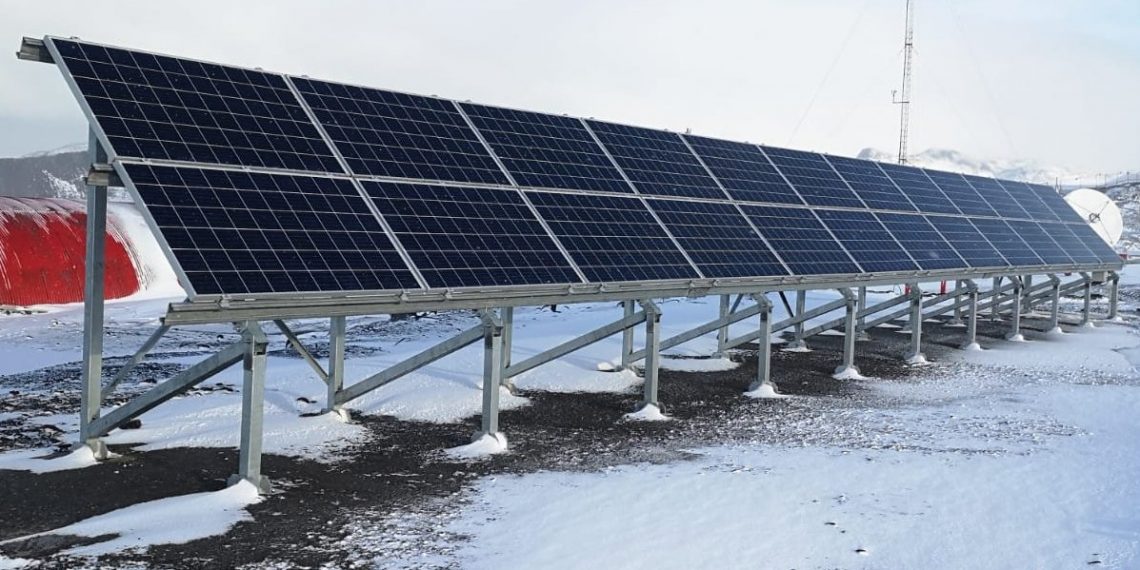The Uruguayan government agency Instituto Antarctico Uruguayo (IAU) is collaborating with ABB, Uruguay utility UTE and the Ministry of Industry, Energy and Mining (MIEM) to provide a second solar power installation at the IAU’s research base in the Antarctic.
The project aims to facilitate crucial climate change research, as well as strengthen the use of solar photovoltaic systems at the Artigas base, to further the use of renewable energy instead of using stand-by diesel generators.
The base enables the IAU to reduce the country’s dependency on fossil fuels – vitally important as many of the world’s largest global economies work towards a target of net zero carbon emissions by 2050.
The ABB solution will include the solar inverter UNO-DM-6.0-TL (6 kW at 230VAC 1ph), MCB 40A 2-pole and RCD 40A 300mA 2-pole, 24 ground-mounted solar panels JINKO 270W (12 modules per string), and a connection to ABB’s Aurora Vision Plant Management portal via the inverter’s embedded WI-FI interface.
The Aurora Vision portal provides the ability to remotely monitor the performance of the installation, so the teams involved can compare the new solar plant’s performance to the existing panels. The data gathered will provide invaluable insight to inform future expansions. IAU also made the portal available to view real-time online, encouraging public engagement with the base’s sustainability efforts.
ABB’s plug and play solar inverter also means that installation was significantly simplified. It took only three days to install the PV system with the help of Smart Green Uruguay (SGU).
Due to the harsh and unpredictable weather conditions, and the short timeframe to complete the installation, ABB pre-configured the equipment by testing it in a laboratory that recreated the adverse Antarctic environment. ABB then provided extensive training for the installers, and real-time support to SGU throughout the installation via the Aurora Vision Management platform.
In 2018, ABB solar solutions played a key part in establishing the first solar system at the Artigas Base, so it was the natural partner for this second major PV installation in 2019. However, in the first phase of installation the solar panels had been mounted onto building walls to minimize wind interference. This compromised performance as the panels weren’t positioned at the optimum tilt of 55° North.
Taking this learning into the second installation, the solar panels were ground mounted, achieving a better position for sunlight to ensure maximum performance. In other words, during sunlight hours in summertime, up to 10 per cent of the instant power demanded by Artigas Base can be provided by the optimized solar plant. It has already offset 0.8 metric tons of carbon emissions in the first two months since its installation – reducing Artigas’ impact on the delicate Antarctic ecosystem, and creating operational (OPEX) savings that will be put back into critical scientific research.
Diego Giacosa, engineer at UTE, commented: “This was a very challenging project, which was only possible to deliver if everybody worked as a team. The insights gleaned from the management platform enable us to track, monitor and diagnose issues before they arose, helping us manage teams and resources effectively. We are encouraged by the results and solar is a reliable fuel choice to help us meet zero carbon targets.”
Francisco Manfredi, service sales specialist at ABB, added: “We were able to take the considerable learnings from the first installation in 2018 and apply them to this project. Hence, we were able to provide an even more reliable solution and support the IAU in its goal of powering Artigas by renewable energy. The results so early into the project are fantastic and will help contribute to vital scientific research as the world reduces its reliance on fossil fuels to meet its climate challenges.”





